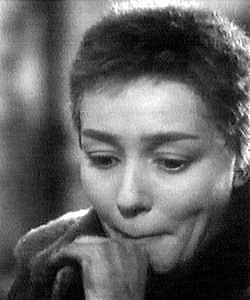In 1957 French avantgarde filmmaker Alain Resnais set himself the difficult task to make a film about the uncertainty of knowledge. Together with Marguerite Duras, he developped a script which was to tell "a story so banal" that it could counter the weight of the unnamable human tragedy in Hiroshima. The original script even proposed introducing the film with footage of the mushroom cloud. The premise was thus to make a film about the formalization of experience in the media and its contradiction with personal memories. At the same time, his film shows the arbitrariness of visual signs and their semantic interrelations. His film is as much a film about Hiroshima and the volatility of knowledge, as it is a reflection on the medium itself.
The Art Cinema Approach
A canonical example of film analysis locates the film within the framework of European Art Cinema, as opposed to American Mainstream Cinema. One of the most influential theoretical approaches to film has been the work of David Bordwell. In his article The Art Cinema as a Mode of Film Practice, Bordwell states that the art cinema defines itself explicitely against the classical narrative mode, and especially against the cause-effect linkage of events. (Bordwell, 1979, 57).
In the classical cinema narrative form motivates cinematic representation whereas the art film motivates its narrative by two principles: realism and authorial expressivity. Against the goal orientation of characters in a classical narration, the art film relies upon “psychologically complex characters

